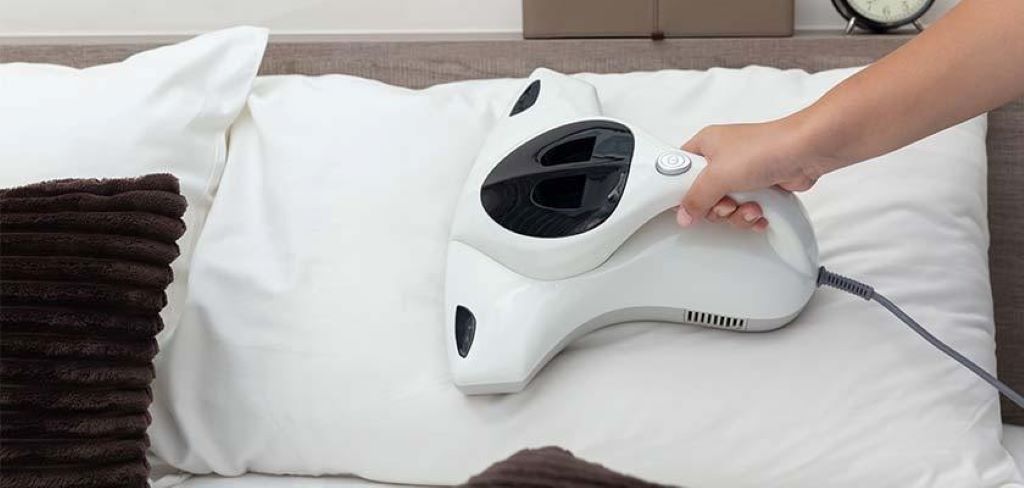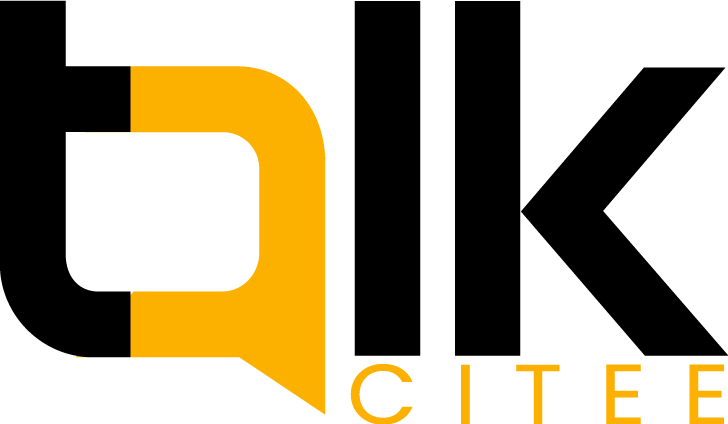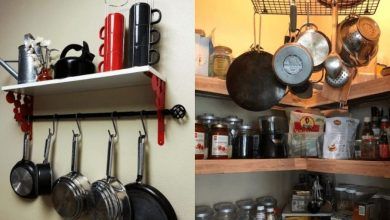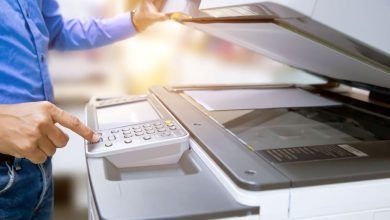
Cleaning Tips for MVMI Ergonomic Pillows
Proper maintenance of your ergonomic pillow ensures years of comfortable sleep and optimal neck support. MVMI ergonomic pillows require specific care techniques to preserve their unique materials and structural integrity. Regular cleaning prevents bacteria buildup, eliminates odors, and maintains the pillow’s therapeutic benefits. Peak Pillows provides comprehensive guidance on maintaining various pillow types, including specialized ergonomic designs that require careful attention.
Understanding your pillow’s construction is essential before beginning any cleaning routine. MVMI pillows typically feature memory foam cores, gel-infused layers, or specialized fiber fills designed for ergonomic support. Each material responds differently to cleaning methods and requires tailored approaches for optimal results.
Many users wonder about proper maintenance after reading detailed mvmi pillow reviews and investing in these premium sleep accessories. Therefore, following manufacturer-recommended cleaning procedures protects your investment while ensuring hygiene and longevity.
Understanding MVMI Pillow Construction
Memory Foam Components
MVMI ergonomic pillows often contain specialized memory foam that contours to your head and neck. This material provides excellent support but requires gentle cleaning methods to prevent damage. Memory foam can absorb moisture and take extended time to dry completely.
The cellular structure of memory foam makes it susceptible to mold and mildew if exposed to excessive moisture. Therefore, cleaning methods must balance thorough sanitization with moisture control. Additionally, high temperatures can damage the foam’s molecular structure and reduce its supportive properties.
Most MVMI memory foam pillows feature removable covers that protect the internal foam from direct contamination. These covers typically use breathable fabrics that allow air circulation while providing a washable barrier between your skin and the foam core.
Gel-Infused and Cooling Elements
Many MVMI pillows incorporate gel-infused memory foam or separate cooling elements for temperature regulation. These components require special consideration during cleaning to prevent damage to cooling properties. Gel materials can be sensitive to certain cleaning chemicals and extreme temperatures.
The cooling technology in these pillows often relies on specific material compositions that maintain their effectiveness through proper care. Harsh detergents or high heat can compromise these cooling elements. However, gentle cleaning methods preserve both hygiene and cooling functionality.
Some MVMI models feature separate cooling inserts or gel layers that may be removable for individual cleaning. Understanding your specific pillow’s construction helps determine the most appropriate cleaning approach for each component.
Daily Maintenance Practices
Pillow Cover Care
Daily pillow cover maintenance significantly extends the time between deep cleaning sessions. Removing and washing pillow covers weekly prevents oils, dead skin cells, and moisture from penetrating deeper into the pillow structure. Additionally, using multiple pillow covers allows for rotation while others are being laundered.
High-quality pillow covers designed for ergonomic pillows often feature moisture-wicking properties and antimicrobial treatments. These covers require specific care instructions to maintain their special properties. Therefore, always check manufacturer guidelines before washing these specialized covers.
Some MVMI pillow covers feature zippers or special closures that need gentle handling during removal and washing. Forcing zippers or stretching fabric can damage the cover and compromise its protective function. Additionally, proper cover maintenance prevents premature replacement costs.
Surface Cleaning Techniques
Regular surface cleaning removes surface contaminants without exposing the internal materials to moisture. Use a clean, slightly damp cloth to wipe the pillow surface gently. This method removes dust, hair, and light surface soiling without saturating the materials.
Vacuum cleaning with appropriate attachments removes dust mites, dead skin cells, and other allergens from pillow surfaces. Use low suction settings to prevent damage to delicate materials. However, ensure the pillow is completely dry before vacuuming to prevent moisture-related issues.
UV sanitizing through controlled sunlight exposure can eliminate bacteria and dust mites naturally. Place the pillow in indirect sunlight for short periods, turning regularly to ensure even exposure. Additionally, fresh air circulation helps eliminate odors naturally without chemical treatments.
Deep Cleaning Methods
Spot Cleaning Procedures
Spot cleaning addresses specific stains or soiled areas without subjecting the entire pillow to moisture exposure. Create a gentle cleaning solution using mild detergent and lukewarm water. Apply the solution sparingly to affected areas using a clean cloth or soft brush.
Work the cleaning solution into stains using circular motions, avoiding oversaturation. Excessive moisture can penetrate into foam layers and create mold or mildew problems. Therefore, use minimal amounts of cleaning solution and work quickly to prevent deep penetration.
After spot cleaning, use clean, damp cloths to remove soap residue thoroughly. Soap residue can attract dirt and create unpleasant odors over time. Additionally, ensure complete drying before returning the pillow to regular use to prevent moisture-related problems.
Professional Cleaning Options
Professional pillow cleaning services have specialized equipment and expertise for handling ergonomic pillows safely. These services often use low-moisture cleaning methods that effectively sanitize without damaging sensitive materials. However, professional cleaning can be expensive and may not be necessary for regular maintenance.
Some dry cleaning services offer pillow cleaning using specialized solvents that don’t involve water. This method can be effective for certain types of stains and odors while avoiding moisture-related risks. Additionally, professional services often provide deodorizing treatments that eliminate persistent odors.
Before choosing professional cleaning, verify that the service has experience with memory foam and ergonomic pillow materials. Some cleaning methods used for traditional pillows can damage specialized ergonomic materials. Therefore, clear communication about pillow construction prevents cleaning damage.
Washing Machine Guidelines
Determining Washability
Not all MVMI ergonomic pillows are machine washable due to their specialized materials and construction. Check manufacturer labels and instructions carefully before attempting machine washing. Memory foam and gel components typically cannot withstand machine washing cycles.
Removable covers and some fiber-filled ergonomic pillows may be machine washable with proper settings. Use gentle cycles, cold water, and mild detergents to prevent damage. However, even washable pillows may require special drying procedures to maintain their shape and properties.
Some MVMI pillow models feature removable and washable components while others require only cover washing. Understanding which parts can be safely machine washed prevents accidental damage to non-washable materials. Additionally, following specific washing instructions maintains warranty coverage.
Proper Washing Techniques
When machine washing is appropriate, use cold water and gentle cycles to minimize material stress. Hot water can damage memory foam structures and cause shrinkage or hardening. Additionally, gentle cycles reduce mechanical stress that could damage pillow construction.
Use mild, fragrance-free detergents designed for sensitive materials. Fabric softeners and bleach can damage specialized pillow materials and reduce their effectiveness. Therefore, simple, gentle cleaning products provide the safest approach for maintaining pillow integrity.
Load washing machines properly to prevent pillows from becoming unbalanced during cycles. Wash pillows individually or with similar items to maintain proper water circulation. Additionally, consider adding clean tennis balls to help maintain pillow shape during washing.

Drying Procedures and Best Practices
Air Drying Methods
Air drying represents the safest method for most MVMI ergonomic pillows, particularly those containing memory foam or gel components. Place pillows in well-ventilated areas away from direct heat sources or sunlight. Proper air circulation prevents mold and mildew while protecting materials from heat damage.
Turn pillows regularly during air drying to ensure even moisture removal and prevent flat spots from developing. This process may take 24-48 hours depending on humidity levels and pillow construction. However, patience during drying preserves pillow quality and longevity.
Use fans or dehumidifiers to accelerate drying in humid environments or during rainy weather. Proper air circulation significantly reduces drying time while preventing moisture-related problems. Additionally, monitoring moisture levels ensures complete drying before storage or use.
Machine Drying Considerations
Machine drying is generally not recommended for MVMI ergonomic pillows containing memory foam or gel components. High heat can permanently damage these materials and reduce their supportive properties. Therefore, air drying remains the preferred method for most ergonomic pillow types.
If machine drying is absolutely necessary for washable components, use no-heat or air-only settings. Add clean tennis balls or dryer balls to maintain pillow shape and improve air circulation. However, monitor the drying process closely to prevent overheating or damage.
Some pillow covers may tolerate low-heat machine drying, but check manufacturer instructions carefully. Even heat-tolerant materials can shrink or lose special properties when exposed to excessive temperatures. Additionally, removing items while slightly damp and finishing with air drying provides extra protection.
Stain Removal Techniques
Common Stain Types
Ergonomic pillows commonly encounter various stains including sweat, oils, makeup, and beverages. Each stain type requires specific treatment approaches for effective removal without damaging pillow materials. Additionally, prompt treatment prevents stains from setting permanently into fabrics or foams.
Protein-based stains like sweat and blood require enzyme-based cleaners for effective removal. These cleaners break down protein molecules without harsh chemicals that might damage pillow materials. However, test cleaning products on inconspicuous areas before treating visible stains.
Oil-based stains from skin oils, lotions, or hair products can penetrate deeply into pillow materials. These stains often require multiple treatment cycles and specific degreasing agents designed for delicate materials. Therefore, prevention through regular cover washing proves more effective than stain removal.
Natural Cleaning Solutions
Natural cleaning solutions offer safe alternatives to harsh chemicals for maintaining MVMI ergonomic pillows. White vinegar mixed with water creates an effective antimicrobial solution that eliminates odors and bacteria without damaging most pillow materials. Additionally, vinegar solutions dry without leaving residues that might attract dirt.
Baking soda provides excellent odor absorption and can help lift light stains from pillow surfaces. Sprinkle baking soda over problem areas, allow it to sit for several hours, then vacuum thoroughly. However, ensure complete removal of baking soda residue to prevent accumulation in pillow materials.
Hydrogen peroxide offers gentle bleaching action for light-colored pillows with organic stains. Use 3% hydrogen peroxide solutions and test on inconspicuous areas first. Additionally, rinse thoroughly after treatment to prevent residue buildup that could cause fabric degradation over time.
According to sleep research published by the National Sleep Foundation, proper pillow hygiene significantly impacts sleep quality and reduces allergen exposure, making regular cleaning essential for health benefits.
Odor Elimination Strategies
Identifying Odor Sources
Understanding odor sources helps determine the most effective elimination strategies. Common sources include bacterial growth, moisture accumulation, and absorption of environmental odors. Memory foam materials can trap odors more readily than traditional pillow fills, requiring specific treatment approaches.
Body oils and sweat create ideal conditions for bacterial growth, which produces unpleasant odors over time. These biological sources require antimicrobial treatments rather than simple masking with fragrances. Therefore, addressing root causes proves more effective than temporary odor covering.
Environmental odors from smoking, cooking, or pets can penetrate pillow materials and persist despite regular cleaning. These absorbed odors often require specialized treatment methods including activated charcoal exposure or ozone treatment. Additionally, preventing exposure through protective covers reduces odor absorption.
Effective Deodorizing Methods
Activated charcoal provides natural odor absorption without chemical treatments that might damage pillow materials. Place pillows in sealed containers with activated charcoal for 24-48 hours to absorb trapped odors. However, ensure pillows are completely dry before charcoal treatment to prevent moisture-related issues.
Fresh air exposure in clean, outdoor environments can naturally eliminate many odors while providing UV sanitization benefits. Choose shaded areas to prevent direct sun damage while allowing air circulation around all pillow surfaces. Additionally, morning hours often provide the best combination of fresh air and low humidity.
Essential oil treatments can provide pleasant scents while offering antimicrobial benefits. Use diluted essential oils applied to pillow covers rather than direct foam contact. However, test for allergic reactions and ensure oils don’t stain or damage pillow materials before widespread application.
Storage and Long-Term Care
Proper Storage Conditions
Proper storage prevents damage during periods of non-use and maintains pillow quality over time. Store clean, completely dry pillows in breathable storage bags or containers that allow air circulation. Plastic bags can trap moisture and promote mold growth in stored pillows.
Climate-controlled storage areas prevent temperature and humidity fluctuations that can damage memory foam and other specialized materials. Extreme temperatures can cause materials to become brittle or lose their supportive properties. Therefore, consistent storage conditions preserve pillow quality during extended storage periods.
Avoid storing pillows in compressed positions that could permanently deform memory foam or other materials. Use appropriate-sized storage containers that accommodate pillows without forcing compression. Additionally, check stored pillows periodically to ensure no moisture or pest problems develop.
Rotation and Replacement Guidelines
Regular pillow rotation extends usable life by preventing excessive wear in specific areas. Flip and rotate pillows weekly to distribute wear patterns evenly across all surfaces. This practice maintains consistent support and prevents premature sagging or indentations.
Monitor pillow condition regularly for signs of wear, loss of support, or persistent odors that cleaning cannot eliminate. Most ergonomic pillows maintain effectiveness for 2-3 years with proper care, though individual usage patterns affect longevity. However, replacing worn pillows ensures continued therapeutic benefits and sleep quality.
Document cleaning schedules and pillow condition to track maintenance needs and replacement timing. Regular maintenance schedules prevent small problems from becoming major issues requiring professional intervention or premature replacement. Additionally, warranty coverage often requires documented proper care and maintenance.
According to consumer reports from Consumer Reports, proper pillow maintenance can extend usable life by up to 40% while maintaining hygiene and support properties throughout the pillow’s lifespan.
Troubleshooting Common Cleaning Issues
Persistent Odor Problems
Persistent odors despite regular cleaning may indicate deeper contamination or material degradation. These issues often require professional assessment to determine whether cleaning can resolve the problem or replacement is necessary. Additionally, identifying contamination sources prevents recurring odor problems.
Deep foam contamination from spills or excessive moisture exposure may require specialized cleaning equipment beyond typical household capabilities. Professional restoration services have tools for deep extraction and sanitization of foam materials. However, severely contaminated pillows may be beyond salvage and require replacement.
Mold or mildew odors indicate serious moisture problems that compromise both pillow integrity and health safety. These conditions typically require immediate disposal and replacement rather than cleaning attempts. Therefore, prevention through proper drying and storage proves more effective than remediation.
Damage Prevention
Understanding material limitations prevents cleaning damage that could compromise pillow function or void warranties. Always follow manufacturer guidelines and test cleaning methods on inconspicuous areas before treating entire pillows. Additionally, documenting cleaning procedures provides warranty protection if issues arise.
Avoid common cleaning mistakes including excessive moisture exposure, high-heat drying, and harsh chemical treatments. These practices can permanently damage specialized materials and reduce therapeutic effectiveness. However, gentle cleaning methods preserve both hygiene and functionality.
Professional consultation before attempting complex cleaning procedures can prevent costly mistakes. Many pillow manufacturers offer customer service support for cleaning questions and concerns. Therefore, seeking guidance prevents damage while ensuring proper maintenance procedures.
Conclusion
Proper cleaning and maintenance of MVMI ergonomic pillows requires understanding their specialized materials and construction. Regular maintenance including cover washing, surface cleaning, and proper storage prevents most contamination issues while preserving therapeutic benefits. Additionally, gentle cleaning methods protect the investment while ensuring hygiene and longevity.
Key maintenance practices include daily cover care, weekly deep cleaning, and appropriate storage conditions. Understanding material limitations prevents cleaning damage while following manufacturer guidelines maintains warranty coverage. Therefore, consistent care routines provide years of comfortable, hygienic sleep support.
Professional cleaning services offer solutions for complex cleaning challenges, though regular maintenance prevents most issues requiring professional intervention. Natural cleaning solutions provide safe alternatives to harsh chemicals while addressing common cleanliness concerns effectively. The combination of proper technique and quality materials ensures optimal pillow performance throughout its usable life.
Frequently Asked Questions
How often should I clean my MVMI ergonomic pillow? Clean pillow covers weekly and perform deep cleaning monthly or as needed. Surface cleaning should occur whenever visible soiling appears. However, over-cleaning can damage specialized materials, so follow manufacturer recommendations for your specific pillow model.
Can I machine wash my MVMI memory foam pillow? Most MVMI memory foam pillows cannot be machine washed due to material sensitivity. Only removable covers and some fiber-filled components may be machine washable. Therefore, check manufacturer instructions carefully before attempting machine washing.
What should I do if my pillow gets completely soaked? Remove excess moisture immediately and begin air drying in a well-ventilated area. Turn the pillow regularly and use fans to accelerate drying. However, completely saturated memory foam may require professional restoration or replacement if mold develops.
How do I eliminate persistent odors from my ergonomic pillow? Try natural deodorizing methods including activated charcoal exposure, fresh air treatment, and UV sanitization. Additionally, ensure the pillow is completely clean and dry, as moisture often causes persistent odor problems.
When should I replace my MVMI ergonomic pillow instead of cleaning it? Replace pillows that have lost structural support, developed persistent odors despite proper cleaning, or show signs of mold or mildew. Additionally, replace pillows that no longer provide comfortable support or have exceeded their recommended lifespan of 2-3 years.
Read More:
How to Stop a Cat From Scratching Furniture Without Declawing
Why Eco-Friendly Laundry Sheets Are Important: Greener Laundry Routine







